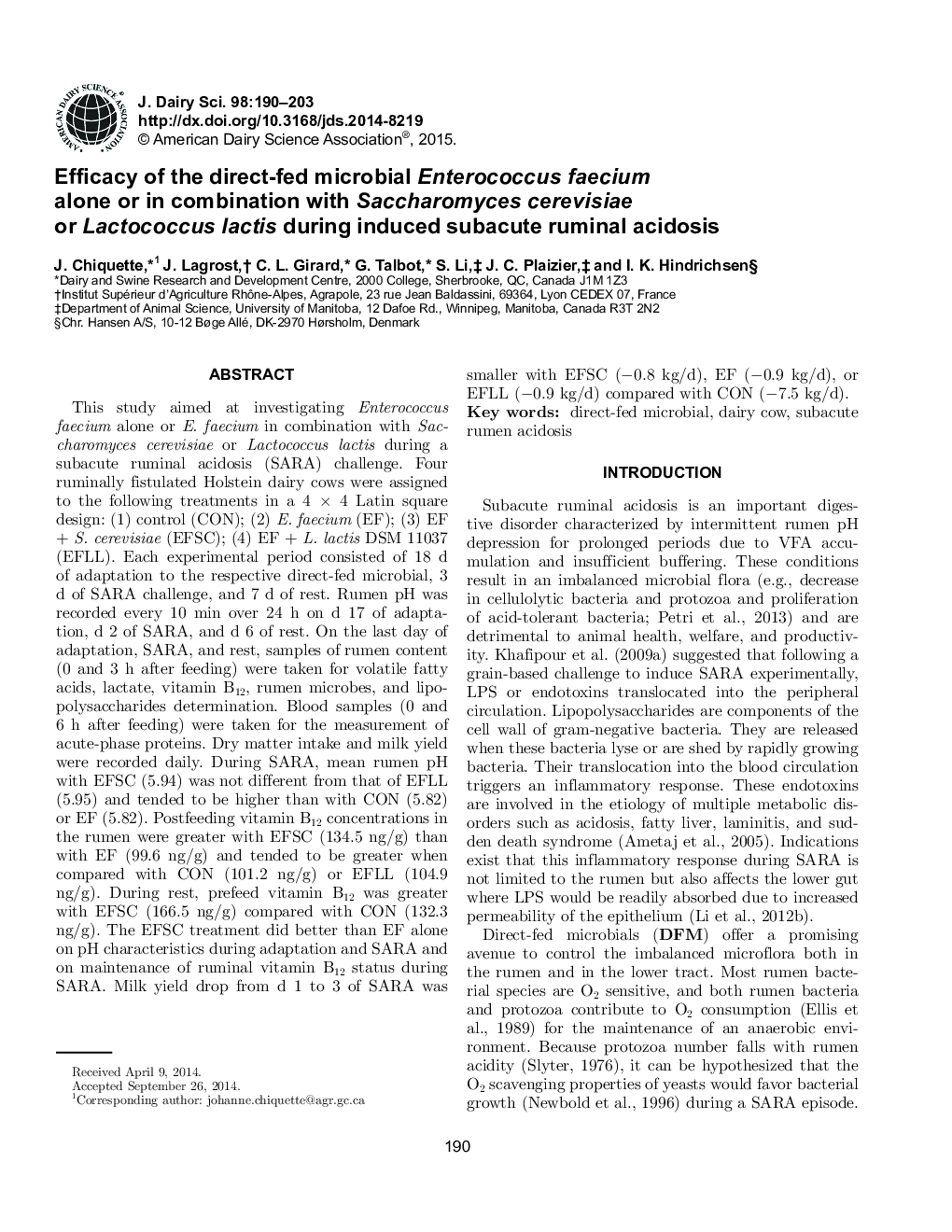| Article ID | Journal | Published Year | Pages | File Type |
|---|---|---|---|---|
| 10973771 | Journal of Dairy Science | 2015 | 14 Pages |
Abstract
This study aimed at investigating Enterococcus faecium alone or E. faecium in combination with Saccharomyces cerevisiae or Lactococcus lactis during a subacute ruminal acidosis (SARA) challenge. Four ruminally fistulated Holstein dairy cows were assigned to the following treatments in a 4Â ÃÂ 4 Latin square design: (1) control (CON); (2) E. faecium (EF); (3) EF + S. cerevisiae (EFSC); (4) EF + L. lactis DSM 11037 (EFLL). Each experimental period consisted of 18 d of adaptation to the respective direct-fed microbial, 3 d of SARA challenge, and 7Â d of rest. Rumen pH was recorded every 10 min over 24 h on d 17 of adaptation, d 2 of SARA, and d 6 of rest. On the last day of adaptation, SARA, and rest, samples of rumen content (0 and 3 h after feeding) were taken for volatile fatty acids, lactate, vitamin B12, rumen microbes, and lipopolysaccharides determination. Blood samples (0 and 6 h after feeding) were taken for the measurement of acute-phase proteins. Dry matter intake and milk yield were recorded daily. During SARA, mean rumen pH with EFSC (5.94) was not different from that of EFLL (5.95) and tended to be higher than with CON (5.82) or EF (5.82). Postfeeding vitamin B12 concentrations in the rumen were greater with EFSC (134.5Â ng/g) than with EF (99.6Â ng/g) and tended to be greater when compared with CON (101.2Â ng/g) or EFLL (104.9Â ng/g). During rest, prefeed vitamin B12 was greater with EFSC (166.5Â ng/g) compared with CON (132.3Â ng/g). The EFSC treatment did better than EF alone on pH characteristics during adaptation and SARA and on maintenance of ruminal vitamin B12 status during SARA. Milk yield drop from d 1 to 3 of SARA was smaller with EFSC (â0.8Â kg/d), EF (â0.9Â kg/d), or EFLL (â0.9Â kg/d) compared with CON (â7.5Â kg/d).
Related Topics
Life Sciences
Agricultural and Biological Sciences
Animal Science and Zoology
Authors
J. Chiquette, J. Lagrost, C.L. Girard, G. Talbot, S. Li, J.C. Plaizier, I.K. Hindrichsen,
